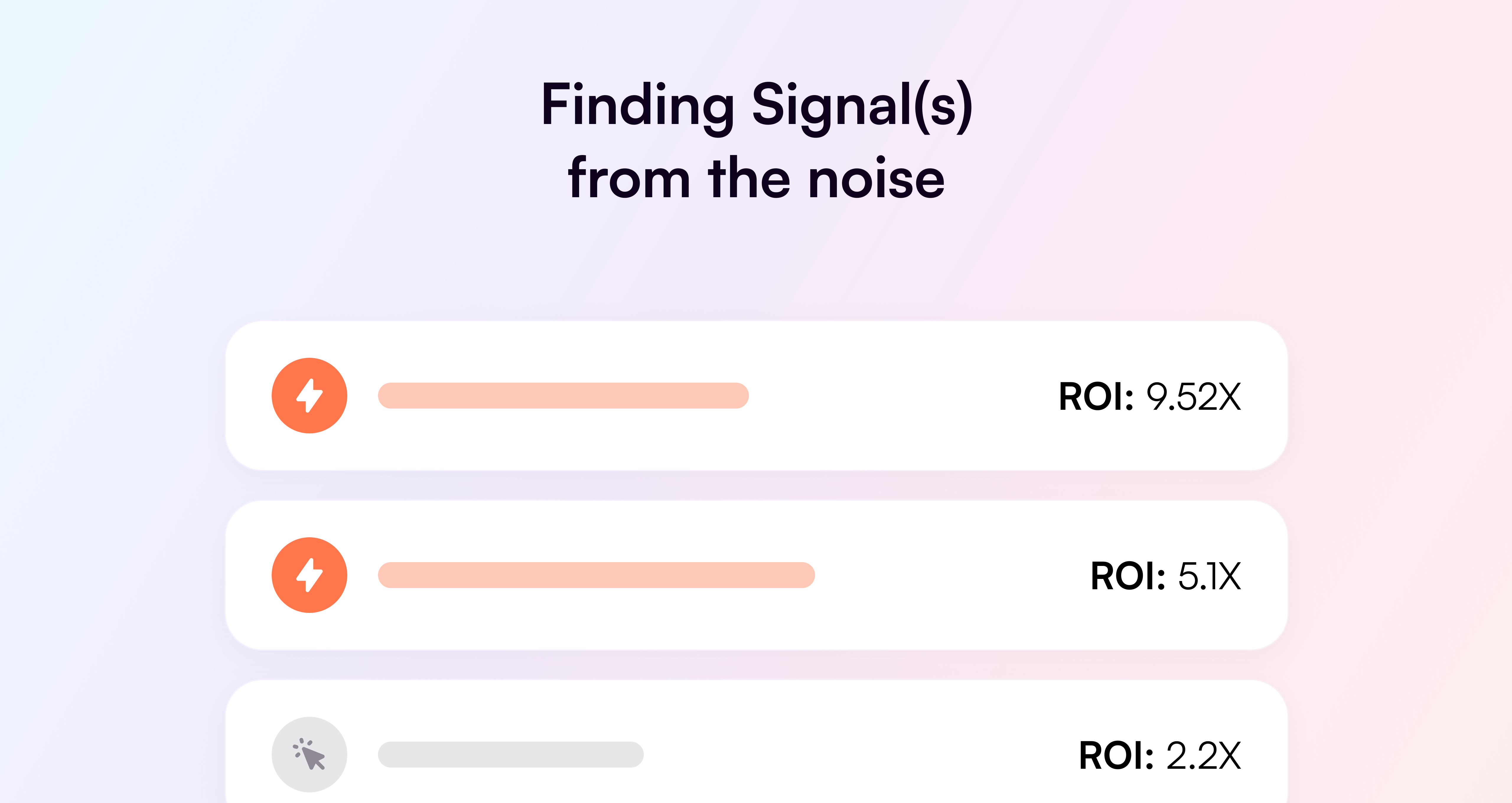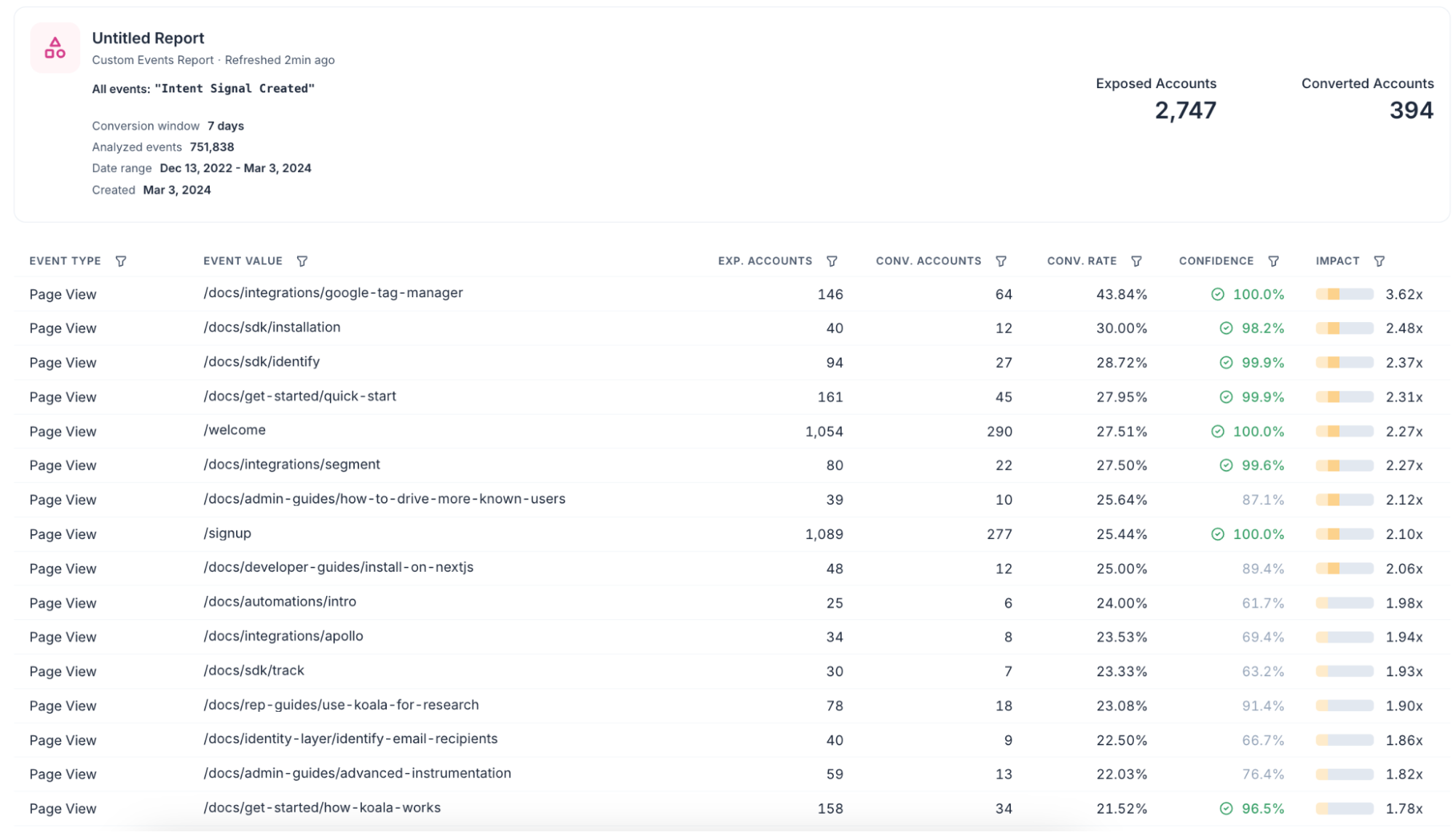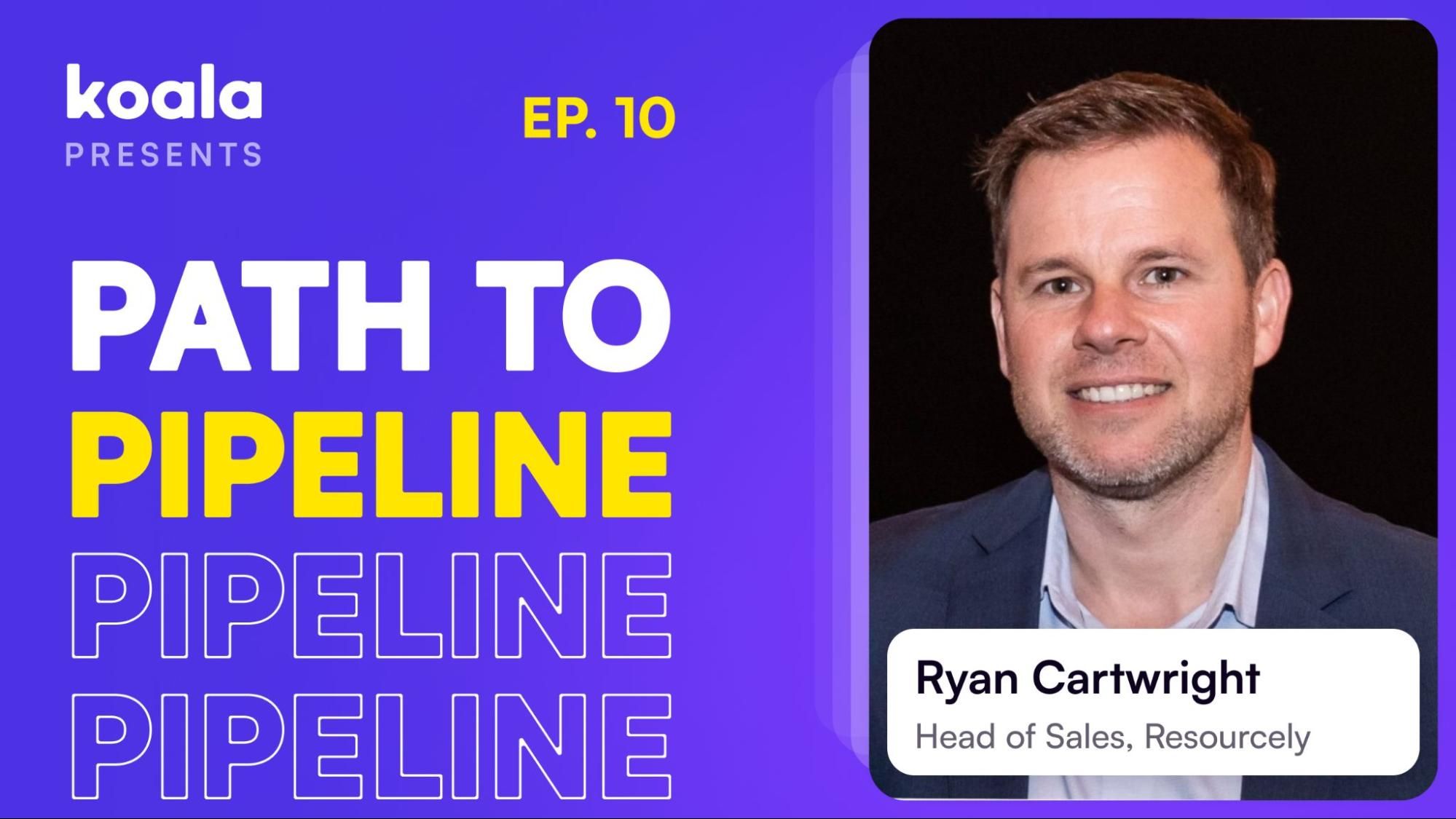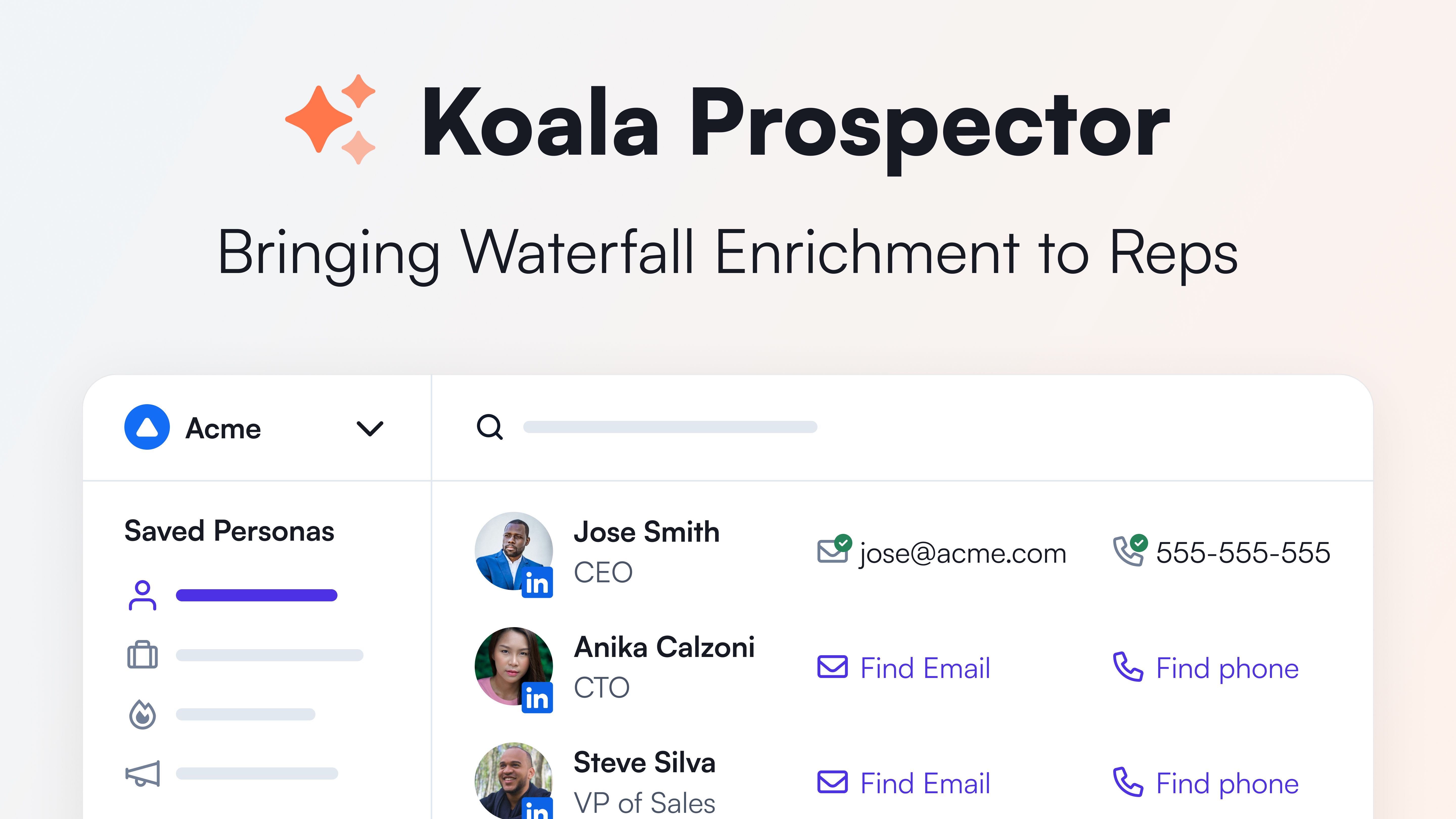Part 3: Finding Signal(s) from the noise

In our four-part series, 'Under the Hood: Koala's Data Platform,' we're sharing our insights on the key ingredients necessary for a world-class first-party intent solution and strategies to help sales and marketing teams get the most out of their first-party website traffic.
- Part 1: Website deanonymization: the definitive technical guide
- Part 2: Collecting and modeling first-party intent data for B2B
- Part 3: Finding Signal(s) from the noise
- Part 4: Incorporating intent into your Rev Ops architecture
I was speaking recently with a CRO at a $5B B2B SaaS company this past week, and he gave me feedback on my pitch: "Lead scoring? Don't call it that. I've literally never met a lead score I liked." He suggested I call it a sales prioritization engine. I confess that this blog post used to be called "Lead Scoring"… but I had to change the name after his take (it strongly resonated).
Whatever we want to call it, of the 50M events per month we get from our larger customers, we certainly can't send that many alerts to their team of 100 reps, so we must find a way to extract signal from the noise.
Filter out bad leads
There is one aspect of traditional lead scoring that is helpful — doing scoring against an ICP, so you can see if the company is even relevant for a sales process. This helps you ignore companies that will never buy — either they are too small, aren't in the right industry, don't have enough web traffic, are in the wrong geography, etc.
Rather than rely on a set of hard rules ("must be 50-500 employees, must be in US, must be in SaaS industry"), we can learn from your Closed Won population to understand what traits they have in common. By weighting each trait independently and combining the weights, we're able to come up with a composite score that gives us an estimate of how close each account is to ICP.
Koala assigns an ICP Fit based on the firmographic characteristics in the account. You can combine Koala account data, Clearbit data, and your CRM data to build a multi-dimensional Fit score. This model is built by performing a frequency test between the converted population (typically customers won by a sales-led motion) against the population (typically everyone on your website). We bucket the scores into four grades, A for the top 25% of traffic, B for the next 25%, C for the next 25%, and D for the bottom 25%. We encourage interpreting these scores as follows:
- A: Bullseye ICP
- Converts: 3.0-3.3x higher than avg
- B: Fringe ICP
- Converts: 0.5-0.9x lower than avg
- C: Ignore for Outbound; Qualify carefully for Inbound
- Converts: 5x worse than avg
- D: Ignore for Outbound; Qualify very carefully for Inbound
- Converts: 10x worse than avg
Here's what that distribution looks like for a customer who has >500 conversions. Their ICP blends Employees, Industry, Estimated ARR, Traffic Rank, and number of tools in Tech Stack (typically a company that has already bought a lot of tools tends to lean a little more toward "buy" on the "build vs buy" spectrum).

Generally our models tell us that it's worth focusing on 25% of the accounts, paying some attention to the next 25% of accounts (think: marketing automation instead of human touch), and completely ignoring 50% of the accounts on your site.
These ICP scores don't tell you anything about the company's timing of when they are in-market, so we need to lean on intent to do that.
Figure out which intent converts
Sales needs a reason to reach out. In order to alert the sales team, we need to find that reason. For this, Koala allows you to set up Intent Signals. You can set these up manually (eg., "Pricing Page Visit", "Technical Docs View", "Sign-up", "Completed Onboarding") or you can let Koala's intent scoring model suggest Intent Signals to you. Koala's intent scoring model analyzes all intent actions (form fills, content consumption, and product events) and scores each one based on how often each action leads to a conversion.
It's easier to show than explain, so here's a report of what marketing content consumption leads up to the main activation moment we care about in the product ("Intent Signal Created").
Most customers use "Opportunities entering SQO stage within 28d" as their conversion event. One surprising thing most customers find is that they have particular content that convert to SQO almost as well if not better than inbound demo requests – it's just hard to know what content to go after without this analysis!

Real-time, constantly-decaying intent scoring
Finally, this intent is rolled-up into a score 0-100. The score takes into account active session time, pageviews, number of users, how many intent signals recently happened, etc. Here's a screenshot of what this looks like in the app )each bar represents 1 day):

Rep feedback loops
We have never deployed a perfect set of Koala rules on the first try. Be sure to build into your process an iterative feedback loop. Here's a few questions you can try:
- Show reps a bunch of A / B accounts - ask reps if any of them seem graded too high?
- Show reps a bunch of C / D accounts - ask reps if any of them seem graded too low?
- Ask reps to scroll through their Slack feeds and ask for any intent signals that they didn't want to see and why.
- Ask reps to think of moments in the marketing journey where they'd love to be notified
- Ask reps to think of moments in the product experience where they'd love to be notified
You'll need to strike a balance between what the raw data is telling you and what your reps are telling you. Ignore the reps - and no one uses the tool. Ignore the data - and the tool won't work well. In our experience, we've found that reps usually are pointing out real problems, but sometimes they can't figure out the root cause of the problem. We find that taking the feedback, looking for patterns, and then responding with broad model adjustments based on a body of feedback is often the right way to iterate.
Conclusion
Sales is only effective when you figure out how to add value to your prospect. Taking the time to understand where your prospect is in their journey and genuinely adding value will always yield the best results. And Sales leaders who really understand the world from a prospect's lens are usually able to systematize signals and train Sales how to be genuinely helpful when each signal fires.
In this 4-part series, we’re exploring the key ingredients necessary for a world-class first-party intent solution and strategies to help sales and marketing teams get the most out of their first-party website traffic. Go further and explore the next articles in our series here:
Tido Carriero
Co-Founder & CEO

